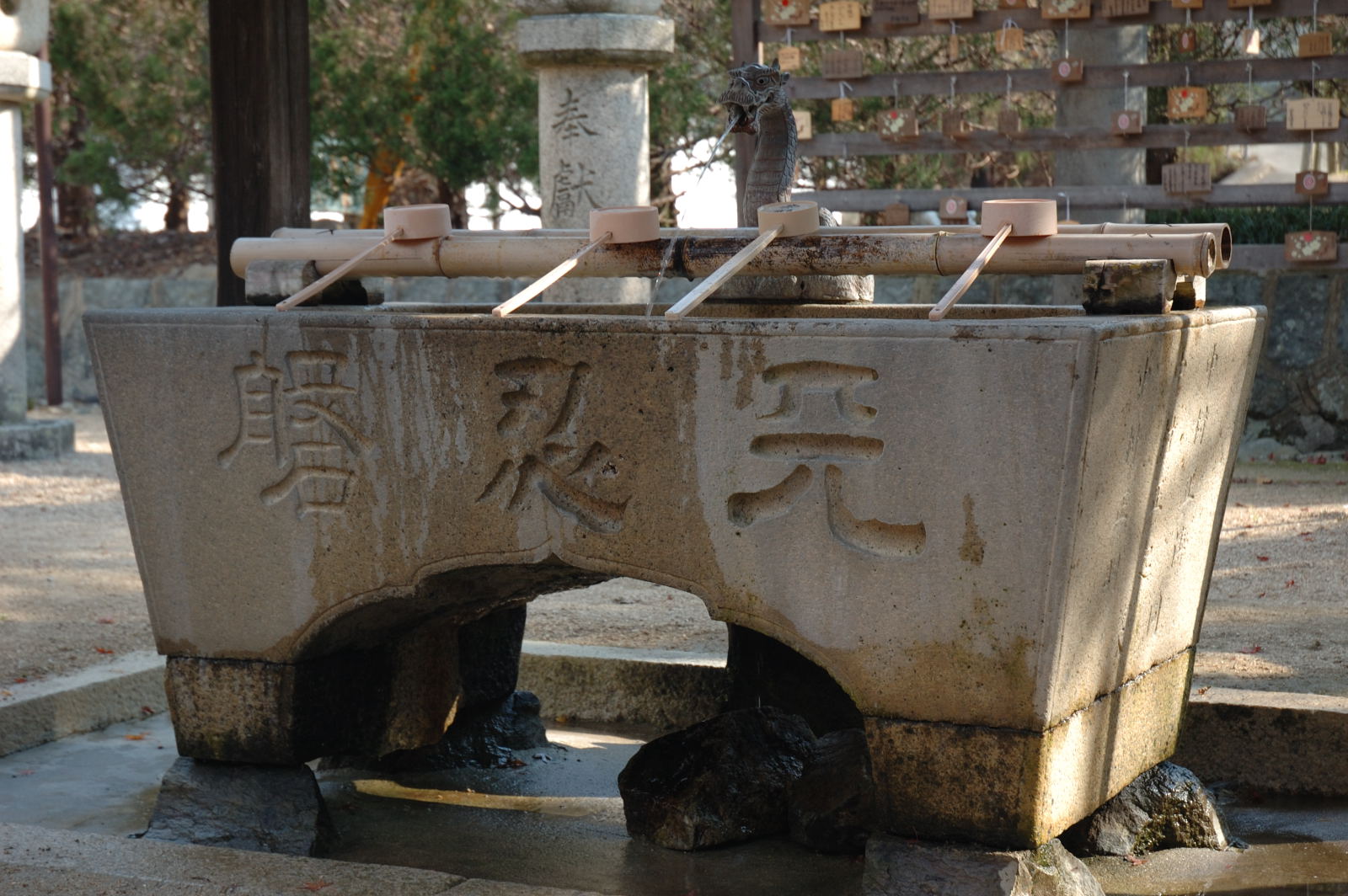Chōzubachi on:
[Wikipedia]
[Google]
[Amazon]
 A , or water bowl, is a vessel used to rinse the hands in Japanese temples, shrines and gardens. Usually made of stone, it plays an important role in the
A , or water bowl, is a vessel used to rinse the hands in Japanese temples, shrines and gardens. Usually made of stone, it plays an important role in the
Tsukubai2.JPG, A famous
tea ceremony
An East Asian tea ceremony, or ''Chádào'' (), or ''Dado'' ( ko, 다도 (茶道)), is a ceremonially ritualized form of making tea (茶 ''cha'') practiced in East Asia by the Chinese, Japanese, and Koreans. The tea ceremony (), literally transla ...
. Guests use it to wash their hands before entering the tearoom, a practice originally adapted from the custom of rinsing one’s mouth and cleansing one’s body in the chōzuya
is a Shinto water ablution pavilion for a ceremonial purification rite known as ''temizu'' or . The pavilion contains a large water-filled basin called a .
At shrines, these ''chōzubachi'', are used by worshippers for washing their left ha ...
before entering the sacred precincts of a Shinto shrine
A is a structure whose main purpose is to house ("enshrine") one or more ''kami'', the deities of the Shinto religion.
Overview
Structurally, a Shinto shrine typically comprises several buildings.
The '' honden''Also called (本殿, meani ...
or a Buddhist temple
A Buddhist temple or Buddhist monastery is the place of worship for Buddhists, the followers of Buddhism. They include the structures called vihara, chaitya, stupa, wat and pagoda in different regions and languages. Temples in Buddhism represen ...
.
Prior to modern plumbing, Japanese homes contained a chōdzu-bachi with a dipper, and provisions for drainage of wastewater, placed so that it could be used from the engawa
An or is an edging strip of non-tatami-matted flooring in Japanese architecture, usually wood or bamboo. The may run around the rooms, on the outside of the building, in which case they resemble a porch or sunroom.
Usually, the is outside t ...
(veranda or corridor). A towel was often hung nearby. One would be placed near the entrance of a latrine
A latrine is a toilet or an even simpler facility that is used as a toilet within a sanitation system. For example, it can be a communal trench in the earth in a camp to be used as emergency sanitation, a hole in the ground (pit latrine), or m ...
, though there might also be chōdzu-bachi elsewhere.
There are many types of chōzu-bachi; for instance, a low chōzu-bachi, with attendant stones, is called a tsukubai
In Japan, a is a washbasin provided at the entrance to a holy place for visitors to purify themselves by the ritual washing of hands and rinsing of the mouth. This type of ritual cleansing is the custom for guests attending a tea ceremony o ...
and is often found in tea-gardens. Chōzu-bachi are usually stone, but may be made of other materials, such as ceramic or bronze.
Gallery
tsukubai
In Japan, a is a washbasin provided at the entrance to a holy place for visitors to purify themselves by the ritual washing of hands and rinsing of the mouth. This type of ritual cleansing is the custom for guests attending a tea ceremony o ...
Aso Jinja March2013 03.jpg, A chōzubachi at Aso Shrine
is a Shinto Shrine in Aso, Kumamoto Prefecture, Japan. Ponsonby-Fane, Richard. (1962). ''Studies in Shinto and Shrines,'' p. 477; Kotodamaya.com"Aso Jinja" retrieved 2012-10-29. Aso is one of the oldest shrines in Japan. This shrine holds sever ...
File:NaraTodaiji0254.jpg, A chōzubachi at Tōdai-ji
is a Buddhist temple complex that was once one of the powerful Nanto Shichi Daiji, Seven Great Temples, located in the city of Nara, Nara, Nara, Japan. Though it was originally founded in the year 738 CE, Tōdai-ji was not opened until the year ...
Tukizihonganzi tyouzuya 01.webm, A continuous stream of water enters
ItsukushimaDipperBasin7431.jpg, A dipper
See also
*Chōzuya
is a Shinto water ablution pavilion for a ceremonial purification rite known as ''temizu'' or . The pavilion contains a large water-filled basin called a .
At shrines, these ''chōzubachi'', are used by worshippers for washing their left ha ...
Notes
Chadō Water and religion Ritual purification Japanese architectural features Shinto in Japan Garden features {{Japan-culture-stub